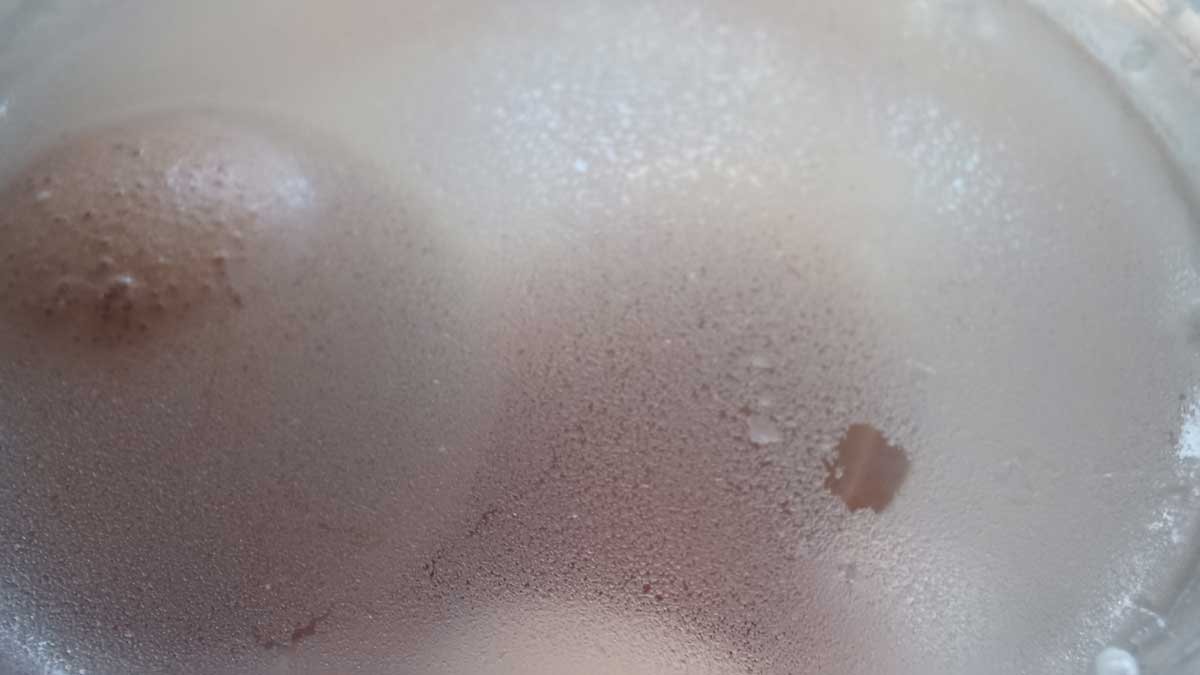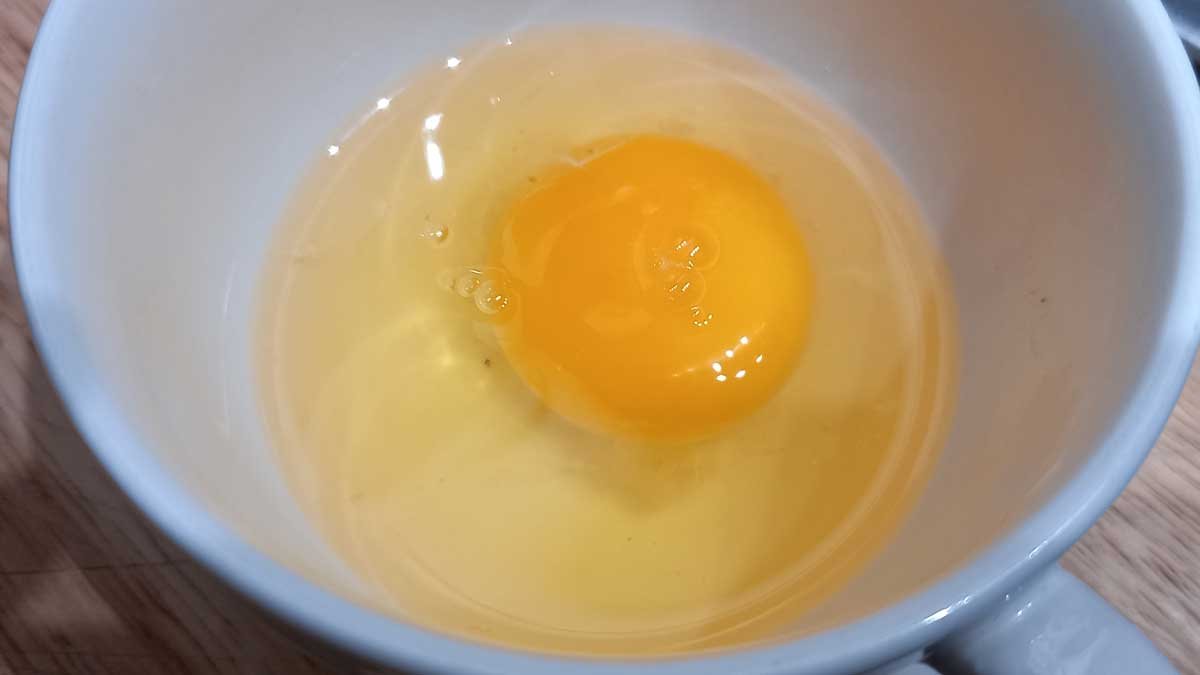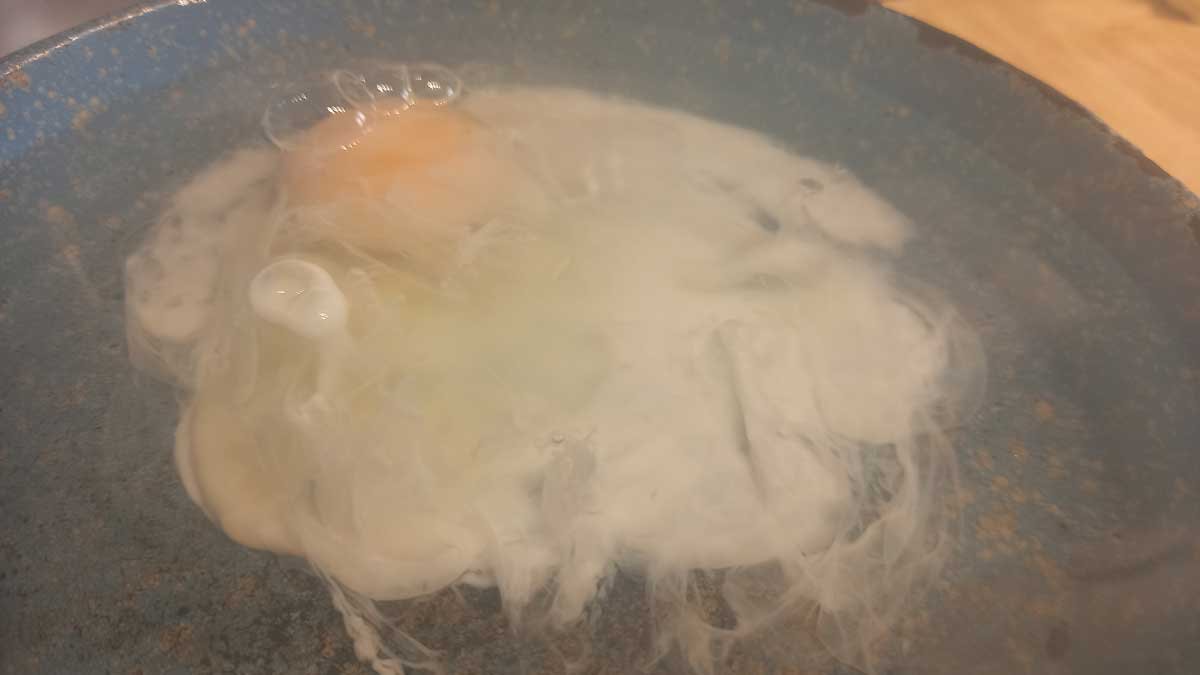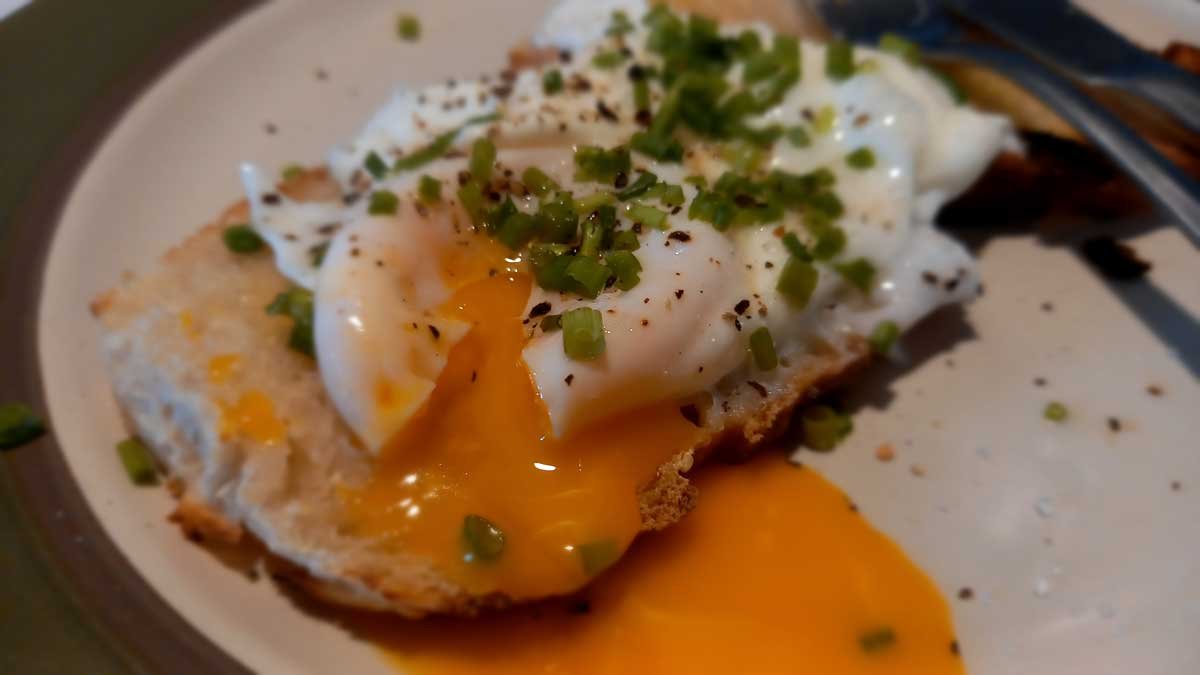Over the summer months, our chooks were pumping out a whole lot of eggs. Given the ongoing egg shortage and resulting very high egg prices, I decided to squirrel some away for winter when the girls wouldn’t be quite as productive by trying water-glassed eggs.
I’ve tried freezing eggs in the past. But that’s not ideal for a few reasons. I didn’t see the days long power cut and subsequent loss of our freezer coming; but I was annoyed that I couldn’t use frozen eggs the same way as fresh ones. Luckily for us, water-glassed eggs don’t require electricity!
Water glassing involves placing clean eggs into a solution of water and calcium hydroxide (sold as hydrated or slaked lime). The lime seals the egg’s shell, keeping the egg itself fresh for up to a year.
When it works, you can use water-glassed eggs in exactly the same ways as any fresh egg – a huge advantage over other egg preservation techniques. I saved 3 dozen eggs in January and February to see how it would go.
Technique and supplies
I used the directions from Fodder Farm because they were Kiwi and metric. A solution of ⅓ cup hydrated lime to 1 litre of water.
The eggs were placed into 2.2 litre clip-top jars from The Warehouse because I’d be able to re-use them forever and they would hide easily at the back of a cupboard. Each jar held roughly 18 eggs and used about 1.5 litres of the lime solution.
Some people use buckets for storage, but it seemed best to save eggs and place them all into the solution at once, before the lime settled. A smaller jar allowed for smaller batches of fresher eggs, as well as being much easier to store in the meantime.
I purchased my hydrated lime from Farmsource – 20 kilograms of the stuff for $21.99 at the time. It was either that or $10.48 for 500g at Bunnings (both of these products appear to have had price rises in the time since).
Hydrated lime is different to garden lime, dolomite lime, or gypsum. We now have 3 giant bags of limes in our sheds, each with a different end-use.
For this purpose, 20kg is a truly ridiculous volume of lime: a 40-year supply if we preserve 6 dozen eggs annually. But lime doesn’t really ‘go bad’, and by the third year it’s a more economical option than the alternative, which felt pursuasive.
I figured if this works, we’re set for life. If it doesn’t, it can also be used as a compost conditioner, so that’s always an option too.
Dark days
Chickens usually stop or slow down with laying in winter as the days get shorter. Their energy goes into a moult – becoming a bit scraggly and growing a new set of feathers.
Older commercial chickens (like ours, who were already 18 months old when they arrived here last year) or heritage breeds might stop completely. We’re down to 1 or 2 eggs a day off 11 hens.
We have a swap arrangement with our neighbours – a box of eggs for a loaf of fresh-baked sourdough. In summer, we can be swapping up to three boxes of eggs a week. But we’re lucky to scrape one at the moment – and it’s very possible it will be none at all very soon!
So it was time to crack into our stores and try the water-glassed eggs.
Anxiety
The trick to water-glassed eggs is that they must be absolutely naturally clean before you put them into the lime solution. The technique depends on the protective ‘bloom’ coating the eggs naturally have when they’re laid.
But this layer can be removed by washing, or if there is poop or other debris on the egg. If you just get your eggs from the supermarket, you might not quite know how difficult a perfectly clean egg can be to achieve sometimes.
If the egg isn’t perfectly clean or that protective bloom is disturbed, it can mean the lime is unable to seal the egg. That provides a pathway for bacteria to take hold and for your water-glassed eggs to go bad.
For this reason, there is a rule that all water-glassed eggs needs to be separately cracked into a cup or bowl before use. That allows us to deal with any bad ones without spoiling everything else.
When I inspected one of the jars, I noted that one egg was actively floating above the water line.

That’s not a good sign. It means that the egg is giving off gasses that are causing it to float. Every poultry owner eventually learns that good eggs sink, and bad eggs float.
I took it out and cracked it open just to see if I would notice (apart from the floating) that it was bad.
I would – you would too. To put it politely, it failed both the visual and olfactory tests. So far they seem to be reliable indicators if your water-glassed eggs are not good. It’s helpful that signs of spoilage are obvious.
I wouldn’t recommend eating a preserved egg that is even a little bit ‘off’. Smelling ‘eggy’ is OK, but any other smells or if it’s cloudy – be safe and bin it.
A simple start
The first water-glassed egg was used making a batch of cookies. I’d just scraped together a box of eggs for our neighbour, so I didn’t want to use any of the fresh ones. But cookies are also important.
So I grabbed some tongs (you don’t really want the lime on your skin) and pulled out the first preserved egg.
A film had developed on top of the water solution. The lime that had settled on the top of the shell simply washed off when I rinsed it. The shell was perhaps a little harder to crack than normal.
When I tipped the egg into the cup, the yolk stuck to the side of the shell for half a second before following the white.

But Richard and I both agreed the egg looked and smelled totally fine. YOLO, right?
That was Wednesday. After a couple of days we decided we were good. We were both alive, and with no attributable digestive issues.
By Friday I decided I wanted to test freshness, and the best way I knew to do that was to poach one.
How fresh are water-glassed eggs?
I’ve noticed over the years that a fresh egg stays ‘plump’ when placed into water for poaching. The egg white protein hasn’t begun to break down and it clings mostly to the yolk. But an older egg spreads out a lot when placed into the water. The white is flatter: thin and whispy.
I wasn’t quite sure which way my water-glassed eggs would go. In theory, they could be as fresh as the day I placed them in the water – which was within 5 days of being laid. But in reality they were 4 or 5 months old, so there was every chance they might behave like an older egg.
I could definitely tell it wasn’t fresh like the ones still being laid. But it tasted pretty great, and you can’t poach a frozen egg! I know there are some special chefs tricks to a more attractive poached egg, but I wanted to see what it would do naturally without them.

Of course I ate my poached egg on my neighbour’s sour dough, with some chives from the garden.

It was good. The fact that I’m still alive to publish this on Sunday morning also feels encouraging.
Set for life
This worked! It didn’t require any electricity or special storage. Most of the water-glassed eggs survived civil emergencies and fit nicely into a space used for not much at all.
They were there – fresh enough and ready (and not deadly) – when we needed them. And we can use them for anything you might want to use an egg for, no limitations!
The hardest bit of the whole thing was finding enough clean eggs to fill the jars, but I think I can make some adjustments over summer to address that.
There was a smallish initial investment – $44 for two jars and the lifetime’s supply of hydrated lime at the time.
Right now, a dozen mixed grade free range eggs is retailing for $11.50 at my local supermarket. I preserved three dozen eggs this year, meaning I have ‘saved’ myself roughly $35 worth of eggs – the state of the current economy bringing me close breaking even already. The failure rate is still to be fully determined, but currently sits at 1/36.
The question on my mind now is do I have enough water-glassed eggs to get us through to spring? Maybe not.
In writing this, I noticed the jars I used are on a pretty decent special until the end of July. So I have plans to pop into The Warehouse to grab a couple more for next year and beyond.
After a total set up cost of around $60, I’ll have everything I need to preserve 6 dozen eggs every year basically for the rest of our lives.
I think overall, this has been a good investment of time and money that (at least in the current economic climate) will completely break even in its second year. Everything after that will be a bonus!



Well, this is a pretty cool experiment! Glad it worked.
Yeah, definitely glad I gave it a try, and feeling more comfortable with it now!